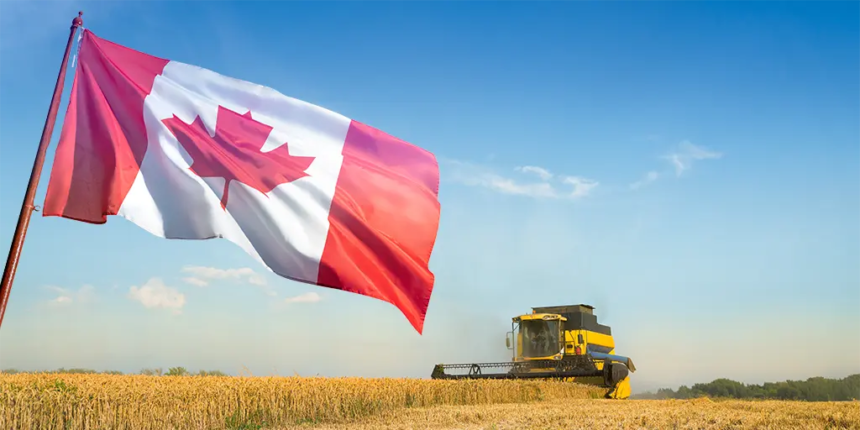By Vijay Jayaraj
When we look at the green fields of Saskatchewan or the salmon-rich waters of British Columbia, it’s easy to forget that just 12,000 years ago, much of Canada was under miles of ice.
The Canada we know today – a mosaic of thriving ecosystems and vast farmland – is the product of a remarkable transformation that began when the last glacial ice receded and embraced the warmth of the Holocene interglacial period.
Born of Canadian Agriculture
Beginning about 11,000 years ago, the Holocene warming and the retreat of massive continental glaciers allowed people to farm. Humans are moving from a nomadic hunter-gatherer society to a more sustainable lifestyle with permanent settlements.
North America is no different, with Canada’s flora and fauna thriving in the new heat. Studies of the spatial and temporal patterns of climate change through the Holocene in the Canadian Arctic show a fairly complex temperature profile, following changes at the global level.
In fact, much of northern Canada experienced a terrifying Little Ice Age in the 1500s, threatening to submerge the continent’s vegetation once more under the ice. Fortunately, the Earth returned to warming naturally in the 1700s.
Especially in the 20th century there was a lot of warming that had a positive effect on the Canadian landscape and agricultural potential.
This recent rise in temperature has pushed the boundaries of arable land further north, extending the growing season and opening up new possibilities for cultivation. Crops like corn that were once thought impossible to grow in many parts of Canada are now thriving.
“Warmer temperatures and frost-free seasons could increase productivity across the board, but especially in the northern regions and the southern and central Prairies,” reports Agriculture and Agri-Food Canada (AAFC) of the Canadian government. In addition, it ensures a higher survival rate for young animals while reducing energy and feed costs.
This climate shift – combined with man-made increases in atmospheric CO2 concentrations that promote plant photosynthesis and with advances in agricultural technology – has contributed to a doubling of the average size of Canadian farms in the past 50 years.
Better Growing Conditions Allowed for Various Plants
While traditional staples like barley and canola remain important, they are now being joined by a variety of products like world-class apples, cherries and grapes in the Okanagan Valley and melons in Newfoundland.
According to data from the Food and Agriculture Organization (FAO), Canada is now the world’s largest producer and exporter of lentils – a niche crop popularized in agrarian Canada by South Asian migrants. Experimentation with new crops and techniques has been the driving force behind the growing diversity and productivity of Canadian agriculture.
The latest AAFC report says, “Production of all major crops (in 2024-2025) is expected to increase by 1.8% year-on-year, which would be 2.4% above the previous five-year average.”
Higher production rates mean more efficient farms. Despite export disruptions due to bovine spongiform encephalopathy (mad cow disease) between 2003 and 2015, the value of Canadian beef and veal exports more than tripled between 2013 and 2022.
The gross production value of agriculture is expected to almost double between 2018 and 2028. The annual growth of the value of agricultural production in five years will be one of the highest.
Even those who subscribe to the apocalyptic vision of climate change are wrongly admitting that “areas of Canada that were previously limited by shorter seasons may find new opportunities for agriculture, such as a second harvest or planting crops that were not possible before.”
Human civilization has benefited enormously from the warming of the last century and in the previous Holocene period it is undeniable. This fact is quite evident in Canada as areas that were once unsuitable for farming are now some of the most productive in the world.
Canadian farmers are grateful for a longer growing season and more atmospheric carbon dioxide that is better for crops. So are we all. After all, Earth is nearing the end of the current interglacial period and the resurgence of mile-thick glaciers in the coming millennia, according to the patterns of geological history.
This commentary was first published in the Toronto Sun on October 13, 2024.
Vijay Jayaraj is Associate Science and Research at Co2 coalitionArlington, Virginia. They holds an MS in environmental science from the University of East Anglia and a postgraduate degree in energy management from Robert Gordon University, both in England, and a bachelor’s degree in engineering from Anna University, India.
Related




